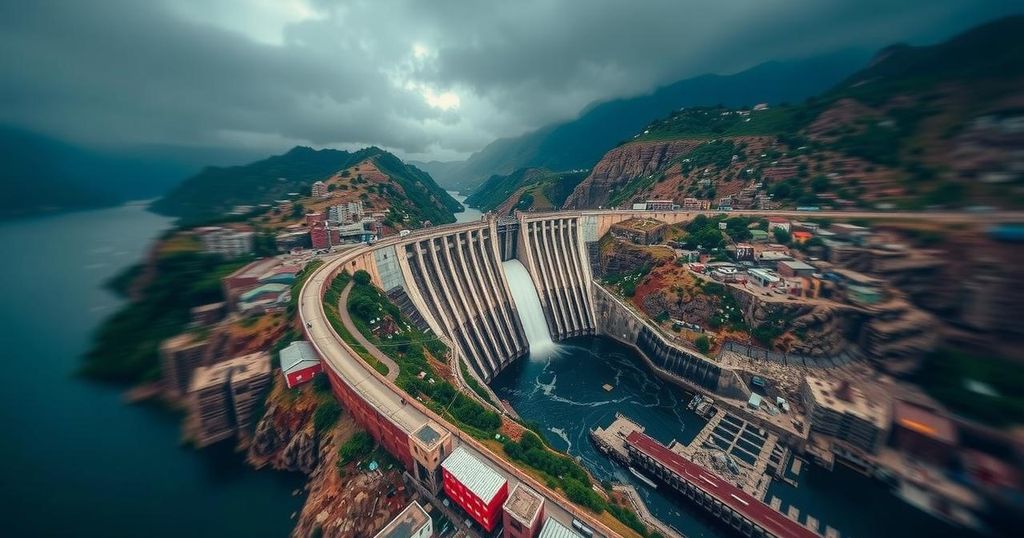Ethiopia Faces Increased Earthquake Activity Raising Concerns for GERD Safety
Ethiopia has experienced its third earthquake of magnitude 4.7 on Sunday, joining a trend of increased seismic activity, which includes 31 quakes this year. Experts express concerns about the Grand Ethiopian Renaissance Dam’s (GERD) safety, as it holds 60 billion cubic meters of water, raising risks should stronger earthquakes occur closer to the structure. Recent data indicates that seismic activity has significantly surpassed historical averages, requiring heightened vigilance towards dam safety.
Ethiopia experienced its third earthquake on Sunday, registering a magnitude of 4.7 at a depth of 10 km. This event occurred approximately 570 km distant from the Grand Ethiopian Renaissance Dam (GERD) and about 400 km from the eastern shore of the lake. Geology expert Abbas Sharaqi from Cairo University indicated that this quake is part of a worrying trend, being the 16th seismic event in five weeks and the 31st recorded in the year thus far, with magnitudes ranging from 4 to 5 degrees. Throughout 2023, there have been 38 recorded earthquakes in Ethiopia, the most powerful being measured at 5.6 degrees. The historical data from 2014 to 2020 indicate an average of only 5.3 earthquakes annually greater than four degrees, yet hundreds of lesser quakes occur. Sharaqi expressed concerns regarding the increased seismic activity that has surpassed expectations, emphasizing the need for vigilant monitoring of both the GERD and the extensive lake spanning over 200 km. While an earthquake registering five degrees and located further from the GERD poses no immediate threat, future earthquakes could be more severe and nearer to the dam, which currently holds a staggering 60 billion cubic meters of water. Sharaqi noted, “the original US plan for the GERD was to store only 11.1 billion cubic meters,” but design specifications were greatly increased by the Ethiopian government, raising potential risks for structural integrity should seismic activity continue or intensify. The recent sequence of seismic events included two additional earthquakes on Saturday, both registering 4.6 degrees at varying depths. These incidents constitute the tenth and eleventh instances in just five weeks, reflecting a disturbing pattern of quakes originating in the Ethiopian Rift Valley, approximately 570 km from the GERD. Overall, the situation raises significant concerns about the safety of the GERD, particularly if earthquakes continue to occur with increasing frequency and proximity to the dam.
Ethiopia is currently experiencing heightened seismic activity, posing potential risks to infrastructure, particularly the Grand Ethiopian Renaissance Dam (GERD). The GERD is a significant hydroelectric project that has been subject to international scrutiny, especially regarding its environmental and geopolitical impacts. The recent increase in earthquake frequency calls into question the designs and safety measures in place for the GERD, which has been constructed to hold a substantial volume of water, far exceeding original plans. Recognizing historical earthquake data and trends can provide insight into the current geological risks facing the region.
The recurring earthquakes in Ethiopia, especially with a notable increase in frequency and magnitude, necessitate immediate attention towards the safety of the GERD. The high volume of water contained in the dam, combined with its proximity to seismic activity, underscores the need for ongoing monitoring and potential reevaluation of safety protocols. As geological experts emphasize the potential dangers, both the Ethiopian government and international observers must prioritize addressing these geological threats to ensure structural integrity and regional safety.
Original Source: ozarab.media




Post Comment